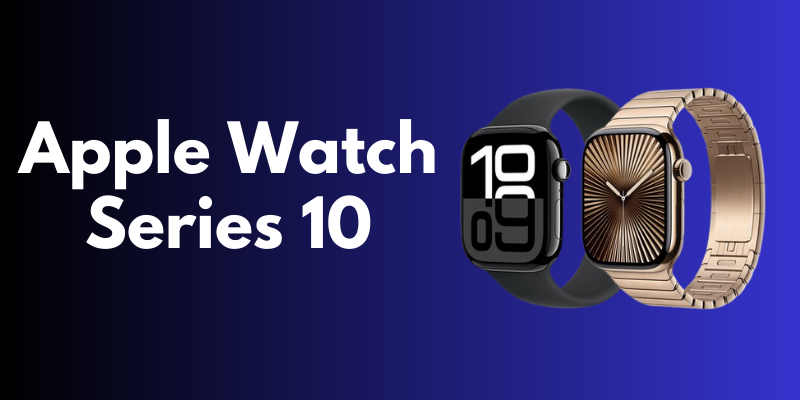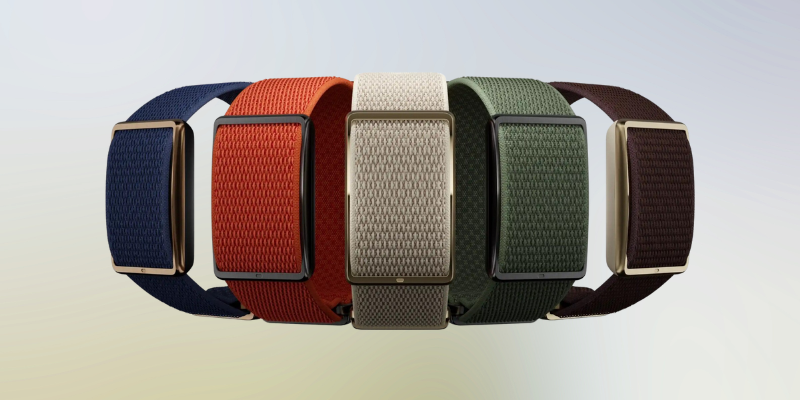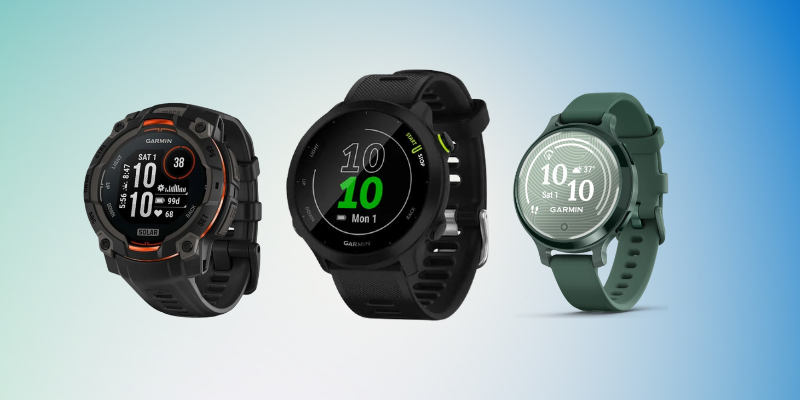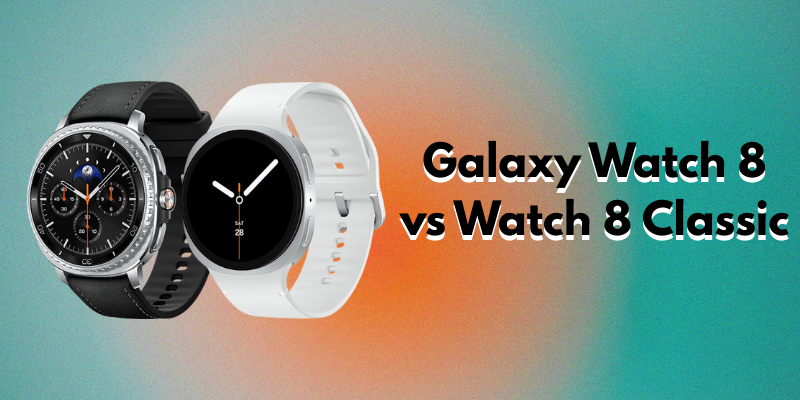Apple Watch Series 10 Review: What You Need to Know

The Apple Watch Series 10 marks a significant milestone in the evolution of wearable technology. As the latest addition to Apple's renowned smartwatch lineup, it brings a host of new features and improvements that push the boundaries of what a wrist-worn device can do. This new iteration has an influence on various aspects of users' daily lives, from health monitoring to communication and productivity.
In this comprehensive review, we'll explore the key aspects of the Apple Watch Series 10. We'll examine its refined design and display, delve into its advanced health monitoring capabilities, and assess its user experience and performance. By the end, readers will have a clear understanding of what the Apple Watch 10 offers and how it stacks up against its predecessors in the Apple series.
A Decade of Apple Watch Evolution
Brief history of Apple Watch
The Apple Watch journey began in April 2015 when the first model was released. It quickly became the world's best-selling wearable device, with 4.2 million units sold in the second quarter of fiscal 2015. The original Apple Watch, often referred to as Series 0, or just simply Apple Watch, set the foundation for future iterations. It introduced a rectangular design available in two sizes, including a smaller option that other smartwatch makers lacked at the time.
Largely speaking, since the release of the original Apple Watch, that has been the name of the game, where Apple leads the way and the competitors race to keep up. This competition may have resulted in what many would consider "lesser copies", but for the industry as a whole, it has meant that competitors can differentiate themselves by the way in which they are different, rather than what they are.
Key improvements over the years
Each subsequent series brought significant improvements. The Series 1 and 2, launched in September 2016, addressed the original's performance issues with a faster dual-core processor. The Series 2 also introduced crucial features like GPS and water resistance for swimming.
The Series 3, released in September 2017, marked a milestone with independent cellular connectivity, allowing users to make calls directly from their watch. It also introduced Siri and improved performance with a new S3 processor.
The Series 4 in 2018 brought larger screen sizes and groundbreaking health features, including ECG sensors and Fall Detection. This positioned the Apple Watch as a 'health guardian', potentially saving lives.
The Series 5 in 2019 finally introduced the much-requested always-on display, utilising new LTPO screen technology. The Series 6 in 2020 added blood oxygen monitoring, further enhancing its health-tracking capabilities.
The Series 7 in 2021 featured a larger display with reduced borders, while the Series 8 in 2022 introduced temperature sensing and Crash Detection. The Apple Watch Ultra model, designed for extreme activities, debuted with enhanced durability and extended battery life.
Series 10 positioning in the lineup
The Apple Watch Series 10 builds upon this rich history of innovation. It features the largest display yet, even surpassing the Apple Watch Ultra 2 in screen size. The Series 10 continues the trend of health-focused improvements with new features like sleep apnea detection and enhanced voice isolation.
The Series 10 is also the thinnest Apple Watch to date, achieved through re-engineering various components, including the SiP, Digital Crown, and speaker. It introduces a new wide-angle OLED display, offering improved visibility at different angles. The watch also boasts faster charging capabilities, reaching 80% battery in just 30 minutes.
With these advancements, the Apple Watch Series 10 cements its position as a cutting-edge device in the smartwatch market, continuing Apple's tradition of pushing the boundaries of wearable technology.
Refined Design and Display
Thinner and lighter form factor
The Apple Watch Series 10 has an influence on the smartwatch industry with its sleek and refined design. Apple has made significant strides in reducing the device's thickness and weight, resulting in a more comfortable and wearable experience. The new smartwatch is 10% thinner than its predecessors, measuring a mere 9.7mm in thickness. This reduction in size has not compromised the watch's functionality or battery life, as it still maintains the impressive 18-hour battery life users have come to expect.
The weight reduction is equally noteworthy, with the aluminium models weighing up to 10% less than the Series 9. For those opting for the titanium version, the weight savings are even more substantial, with the new models being approximately 20% lighter than their stainless steel counterparts. This combination of a thinner profile and reduced weight enhances the overall comfort of the Apple Watch Series 10, making it more suitable for extended wear.
Larger screen with wide-angle OLED
Despite its slimmer profile, the Apple Watch Series 10 boasts a larger display than ever before. The screen size has increased by 9% compared to the Series 7, 8, and 9, and is an impressive 30% larger than the Series 4, 5, and 6. This expansion in screen real estate allows for more information to be displayed at once, improving readability and functionality.
The introduction of a wide-angle OLED screen is a game-changer for the Apple Watch Series 10. This new display technology offers up to 40% more brightness when viewed from an angle, significantly enhancing visibility and readability in various lighting conditions. The bezel surrounding the display has been slimmed down, and the corners of the screen have been engineered to be more rounded, further improving the viewing experience from different angles.
New colour options and materials
Apple has introduced exciting new colour options and materials for the Series 10, catering to a wide range of preferences. The aluminium models now come in a striking jet black finish, achieved through a sophisticated process involving polishing, anodizing, and electroplating. This results in a glossy, reflective shine that sets it apart from previous models. Additionally, the aluminium version is available in an updated rose gold tint and the classic brushed silver variant.
For those seeking a more premium option, Apple has replaced the stainless steel models with new titanium versions. These titanium models, crafted from aerospace-grade material, offer a spectacular reflective, jewellery-like finish while being significantly lighter than their stainless steel predecessors. The titanium Apple Watch Series 10 is available in three stunning colours: natural, gold, and slate grey.
The Apple Watch Series 10 also demonstrates Apple's commitment to sustainability. The standard version utilises 100% recycled aluminium, while the titanium edition incorporates 95% recycled titanium. This eco-friendly approach extends to other components, with recycled materials used in various parts of the watch, including the battery, circuit boards, and magnets.
Strap reusability and compatibility
While it cannot be credited to Apple's ability to design with innovation and vision, which many things when it comes to smartwatches can be, the interchangeability when it comes to watch straps between different models and series is something they are known for. This rich tradition, which especially benefits users who like to upgrade when a new model is released, continues on with the Apple Watch Series 10.
The rules for compatibility with Apple Watch 10 straps when it comes to Series 10, will follow the previous conventions, where 41mm and 45mm straps for previous models will fit the Apple Watch Series 10 42mm and Apple Watch Series 10 46mm respectively.
Health Monitoring Capabilities
The Apple Watch Series 10 continues to revolutionise health monitoring with advanced features that provide users with valuable insights into their well-being. One of the most significant additions to the latest iteration is the sleep apnea detection feature, which has received FDA clearance and has been rolled out to Series 9, Series 10, and Ultra 2 watches.
Sleep apnea detection feature
The new sleep apnea detection feature uses the watch's accelerometer to monitor small movements at the wrist associated with interruptions in normal respiratory patterns. This is tracked through a new metric called Breathing Disturbances. Users can view their nightly Breathing Disturbances in the Health app, where they are classified as elevated or not elevated, and can be viewed over various time periods.
To utilise this feature, users need to wear their Apple Watch Series 10 for at least 10 nights within a 30-day period. If the data indicates consistent signs of sleep apnea, the watch will notify the user. The notification includes the time period when potential sleep apnea occurred, educational materials on the importance of seeking treatment, and a PDF providing three months of breathing disturbance data for discussion with a healthcare provider.
Impact of disabled Blood Oxygen app
Due to an ongoing patent dispute with medical device company Masimo, the Blood Oxygen app has an influence on the availability of certain features in the Apple Watch Series 10. For models sold in the United States, the blood oxygen feature has been disabled. However, users in other countries and regions can still access this health feature on the new watch.
It's important to note that this change does not affect previously purchased Apple Watch units that include the Blood Oxygen feature. The disabling of this feature is likely a software modification rather than a hardware change, suggesting that it could potentially be reactivated through a future update if the legal dispute is resolved.
Other health and fitness tracking
Despite the absence of the Blood Oxygen app in some regions, the Apple Watch Series 10 still offers a comprehensive suite of health and fitness tracking features. The device continues to monitor key metrics such as heart rate, respiratory rate, and wrist temperature during sleep. The new Vitals app in watchOS 11 provides users with a consolidated view of their nightly health metrics, including resting heart rate, overnight respiratory rate, and sleep duration.
The Apple Watch Series 10 also introduces Training Load, a new feature in watchOS 11 that helps users make informed decisions about their workouts. This tool uses accumulated biometric data and user input to establish a baseline and provides daily ratings on the user's capacity for exertion compared to their standard capacity.
With these advanced health monitoring capabilities, the Apple Watch Series 10 continues to position itself as a powerful tool for users to gain insights into their overall wellness and make informed decisions about their health.
User Experience and Performance
watchOS 11 features
The Apple Watch Series 10 comes with watchOS 11, which introduces a host of new features and improvements. One notable addition is the ability to customise Activity ring goals for different days of the week, allowing users to tailor their fitness targets to their schedules. The new Smart Stack feature intelligently displays widgets based on time, location, and daily routines, making it easier to access relevant information quickly.
WatchOS 11 also brings the Translate app to the Apple Watch, enabling users to communicate across 20 languages directly from their wrist. This feature is particularly useful for travellers, as it can function without an iPhone when connected to Wi-Fi or cellular networks. The new Tides app provides valuable information for open water activities, offering seven days of forecasted tidal data for coastlines and surf spots worldwide.
Another significant enhancement is the expanded capability of the double tap gesture. Users can now scroll through any app hands-free, including third-party applications, thanks to the newly available double tap API. This feature improves accessibility and convenience, especially in situations where both hands are occupied.
Battery life and charging improvements
The Apple Watch Series 10 has made significant strides in battery performance and charging capabilities. While maintaining the standard 18-hour battery life, the device now offers up to 36 hours of usage in Low Power Mode. This extended battery life is particularly beneficial for users who rely on their Apple Watch for sleep tracking and other continuous monitoring features.
One of the most notable improvements is the charging speed. The Apple Watch Series 10 can now charge to 80% in just 30 minutes, a substantial improvement over previous models. This rapid charging capability is especially useful for users who need a quick power boost before heading out for the day or before bedtime.
For those interested in sleep tracking, just eight minutes of charging provides enough power for eight hours of sleep tracking. This feature ensures that users can easily monitor their sleep patterns without worrying about running out of battery during the night.
S10 chip and overall performance
At the heart of the Apple Watch Series 10 is the new S10 System in Package (SiP), which has been engineered for improved performance, power efficiency, and intelligence. This chip enables the watch to handle complex tasks more efficiently, including on-device Siri, dictation, and automatic workout detection.
The S10 chip, combined with the built-in 4-core Neural Engine, powers intelligent features that users rely on daily. These include important safety features like Crash Detection and Fall Detection, as well as the updated Smart Stack and redesigned Photos face in watchOS 11.
The improved processing power also supports the new sleep apnea detection feature, which uses advanced algorithms to analyse breathing disturbances during sleep. This feature, available on Series 9, Series 10, and Ultra 2 watches, demonstrates the Apple Watch's growing capabilities as a health monitoring device.
Overall, the Apple Watch Series 10's performance enhancements, combined with the new features in watchOS 11, offer users a more responsive, intelligent, and personalised experience. The improvements in battery life and charging speed address previous limitations, making the device more convenient for all-day and overnight use.
Conclusion
The Apple Watch Series 10 has an influence on the smartwatch industry with its groundbreaking features and sleek design. Its thinner profile, larger display, and advanced health monitoring capabilities, including sleep apnea detection, set it apart from its predecessors. The new S10 chip enhances performance, while improvements in battery life and charging speed make it more convenient to use. These advancements, coupled with the new features in watchOS 11, offer users a more personalised and efficient experience.
To wrap up, the Apple Watch Series 10 continues Apple's tradition of pushing the boundaries of wearable technology. Despite challenges like the disabled Blood Oxygen app in some regions, it remains a powerful tool to gain insights into overall wellness. With its refined design, enhanced performance, and focus on health and fitness, the Series 10 cements its position as a cutting-edge device in the smartwatch market, catering to both tech enthusiasts and health-conscious users alike.










Leave a comment